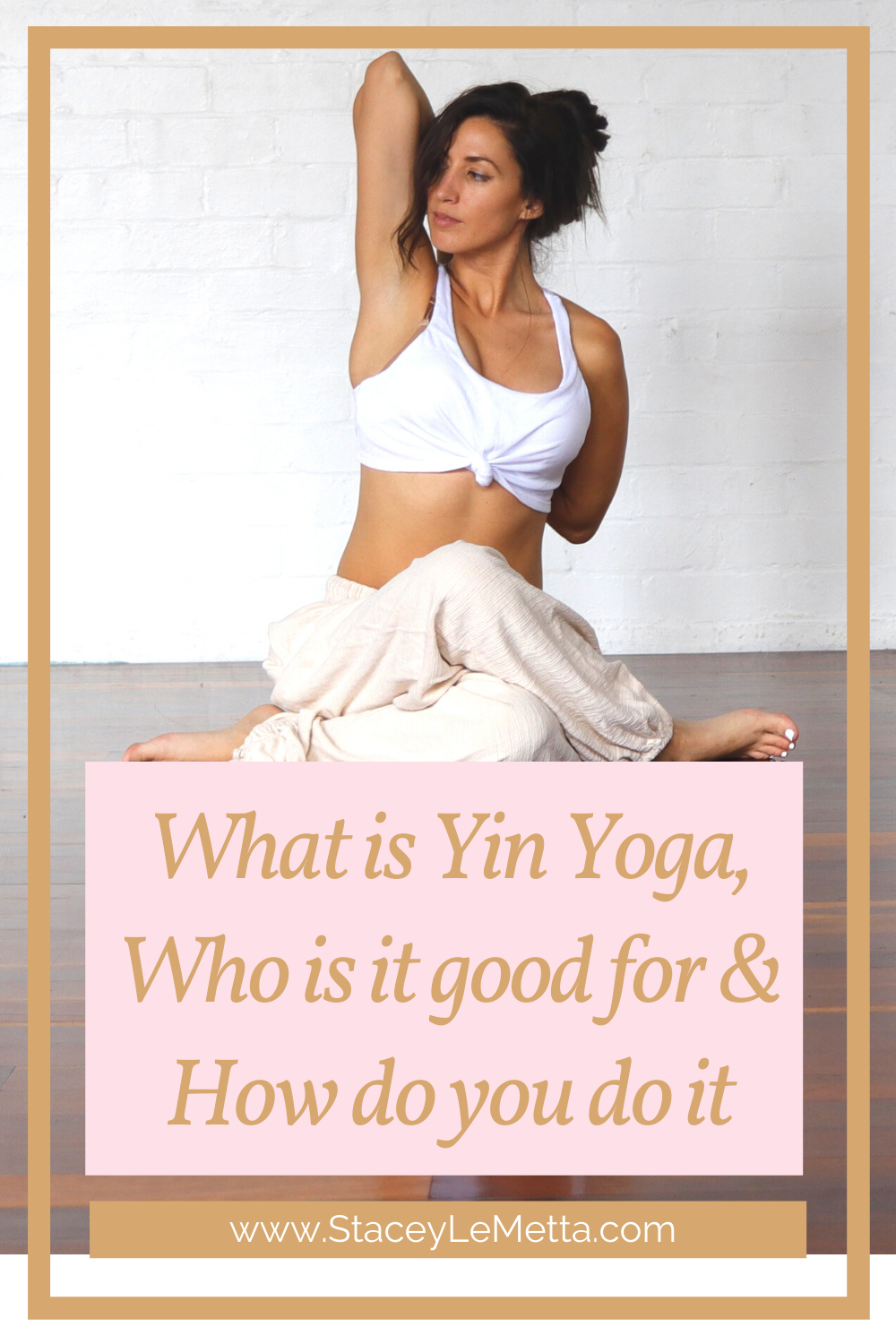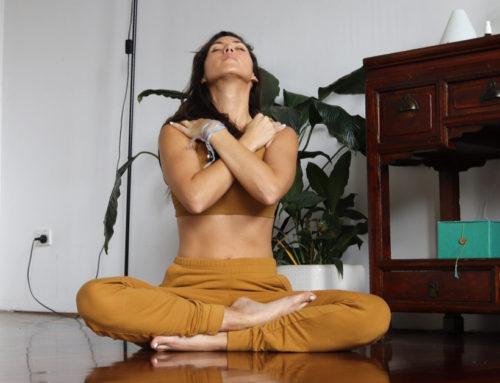What is Yin Yoga, What is it good for & How do you do it
(Plus a Tip most teachers don’t tell you)
What is Yin Yoga
Yin Yoga is perhaps one of the most deeply connected physical practices we are offered.
Unlike other practices, yin allows you to connect intensely with your own body.
Letting you gain the ability to feel into your own connective tissues, as well as the energy and emotions carried within them.
Sounds lush right? It is!
First, let’s explore the background of yin with the science-y bits. Then we can dig deeper into the experience side of things, plus how you can use yin to connect with your feminine.
Who is Yin for? Is yin yoga good for beginners?
Often people mistake Yin as an “easy” practice, reserved for beginners. It’s quite the opposite.
In my classes I’ve found that it is actually the intermediate and experienced yogi’s that benefit the most from yin.
This is due to the requirement of a focused mediation practice being pivotal for truly harnessing yin’s full power.
Being able to ride “your edge” (something beginners are often afraid of) and being willing to breath through uncomfortable places.
So what is Yin yoga and what is it good for?
Yin explores connective tissues through long held postures.
Each posture is typically held for 3 to 5 minutes. Some holds can be as long as 20 minutes!
These extended poses open up your connective tissues, hydrating them so they can become more malleable and fluid.
Yin also works in your emotional body and can help you release hidden build up and even trauma you may have experienced at any point in your life.
What are the Connective Tissues?
- Fibrous – ligaments, tendons, and fascia
- Adipose – stores energy mostly in the form of lipids
- Cartilage – firm yet flexible connective tissue
- Bones – makes up our skeleton
- Blood – the fluid in our body that delivers nutrients and oxygen to the cells, it also transports waste away from those same cells
- Loose – reticular and areolar
The Benefits of Long Holds:
Every living organism adapts to stress.
We grow stronger from incremental stress.
Like a muscle in the gym, the temporary stress to the muscle will help it grow.
Similarly in Yin, we are working to rebuild the connective tissues by adding minor stresses.
This encourages the body to create more Hyaluronic Acid which postpones our “drying out” process that naturally occurs as we age. (Better start now babes!)
Let’s summarize it, the benefits of long holds are:
- Counteract the degeneration that occurs from immobilization
- Work against Contracture
- Working against Fixation
- Stimulate Hyaluronic Acid *Part of the sappy goodness that makes us glow OJAS.
The main difference between Yin yoga and Hatha yoga, or other forms of yoga:
With Yin you are not pushing or pulling your body into postures and your breath is just a normal free flowing breath cycle. Yin is really and truly surrendering yourself to your body and letting it guide you.
VS. Hatha, Vinyasa, Bikram or Ashtanga where you are bending, binding, and stretching your body into poses and postures while breathing in a very controlled way.
Both types of practices has a time and a place. I personally really enjoy both, so don’t feel like you have to choose one and abandon the other.
The Practice of Yin; How to Maximize Its Effect
While there are multiple varieties of practices around the world it comes down to three vital components; room temperature, the breath and practices per week.
The temperature of the room is a large consideration in Yin.
When the body is holding in the extended poses and the room is too warm the tissues can be overstretched.
This can be dangerous.
It is therefore important (and make note of this in your practice) that Yin is held in rooms that are cooler or non-heated.
In Yin the breath is natural and free flowing.
The more connection you have with your breath, the better.
Breath is what allows you to go from pain to pleasure while holding these poses for so long.
When you have a moment of intensity let yourself take the deepest breath you have ever taken and feel what happens.
The amount of practices per week in Yin is typically kept at a maximum of three times a week. This is towards the more advanced level.
I would suggest starting at 1 to 2 times per week to begin and work towards your third session, once you can gauge your body’s recovery.
TIP: One of the things I encourage my students to do when taking my yin classes is to use their hands and drag their legs into the next posture.
This is much more effective to the counter option of using the muscles to lift.
Dragging your legs to the next posture helps encourage your body to stay soft instead of going from resting to working and back and forth.
I myself, along with others, have found this to be really helpful.
Should You Practice Alone or in a Group?
Being able to practice yin around others is an enchanting experience.
It’s the sharing of space while simultaneously being fully in your own body. A beautiful contrast.
This teaches us that we don’t always have to be saying something in order to be or feel connected to another person.
That in itself is enough of a reason to practice in a group.
Practicing at home also has benefits.
You can hold the postures for as long as you like and this can be a really amazing thing.
However, it can also be an “I’ve held this pose long enough.” situation, causing you to leave the pose before you’ve fully released.
Honestly if you are wanting to practice at home I highly recommend a video or audio file practice as guidance.
These aids allow you to focus in on the practice and keep you accountable, keeping you progressing.
If you are looking for an online class you can click here and practice with me.
Or is you live in Sydney, Australia I am currently teaching yin classes here as well. To find out when send me an email and I’ll be happy to send you days and times. Email
What Next? Put it All Into Play.
In the end Yin is one of those practices you have to experience yourself.
It will most likely take several tries to test and find a teacher who truly connects with you.
Someone who guides you correctly while allowing you the time and space to find your personal edge.
Try several different teachers and studios.
Test, experience and find where and who works best with your current stage in life.
It will be worth it! The benefits will far outweigh the time you invest into finding the right class.
Remember babe, if you need some advice or one on one guidance send me an email here


